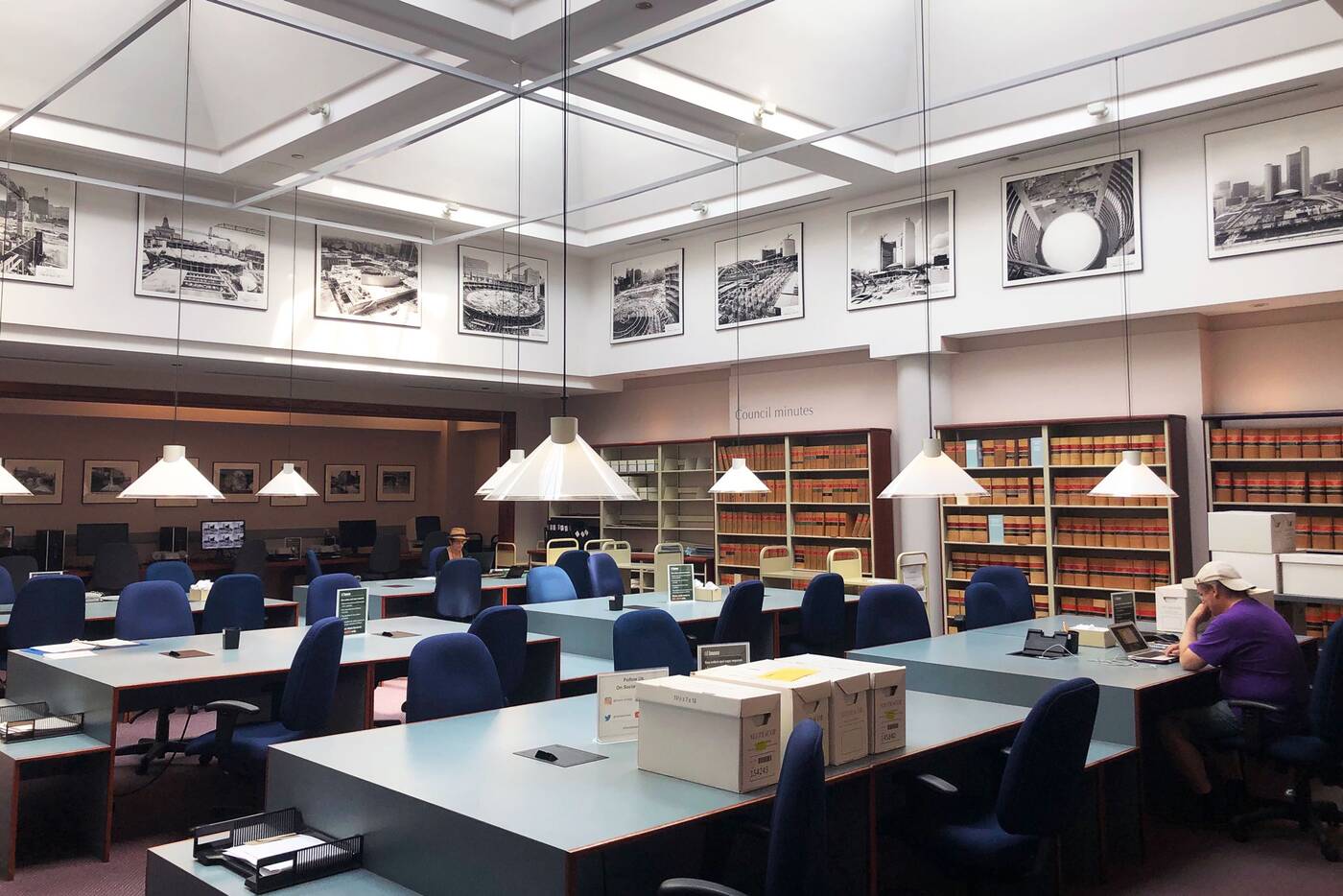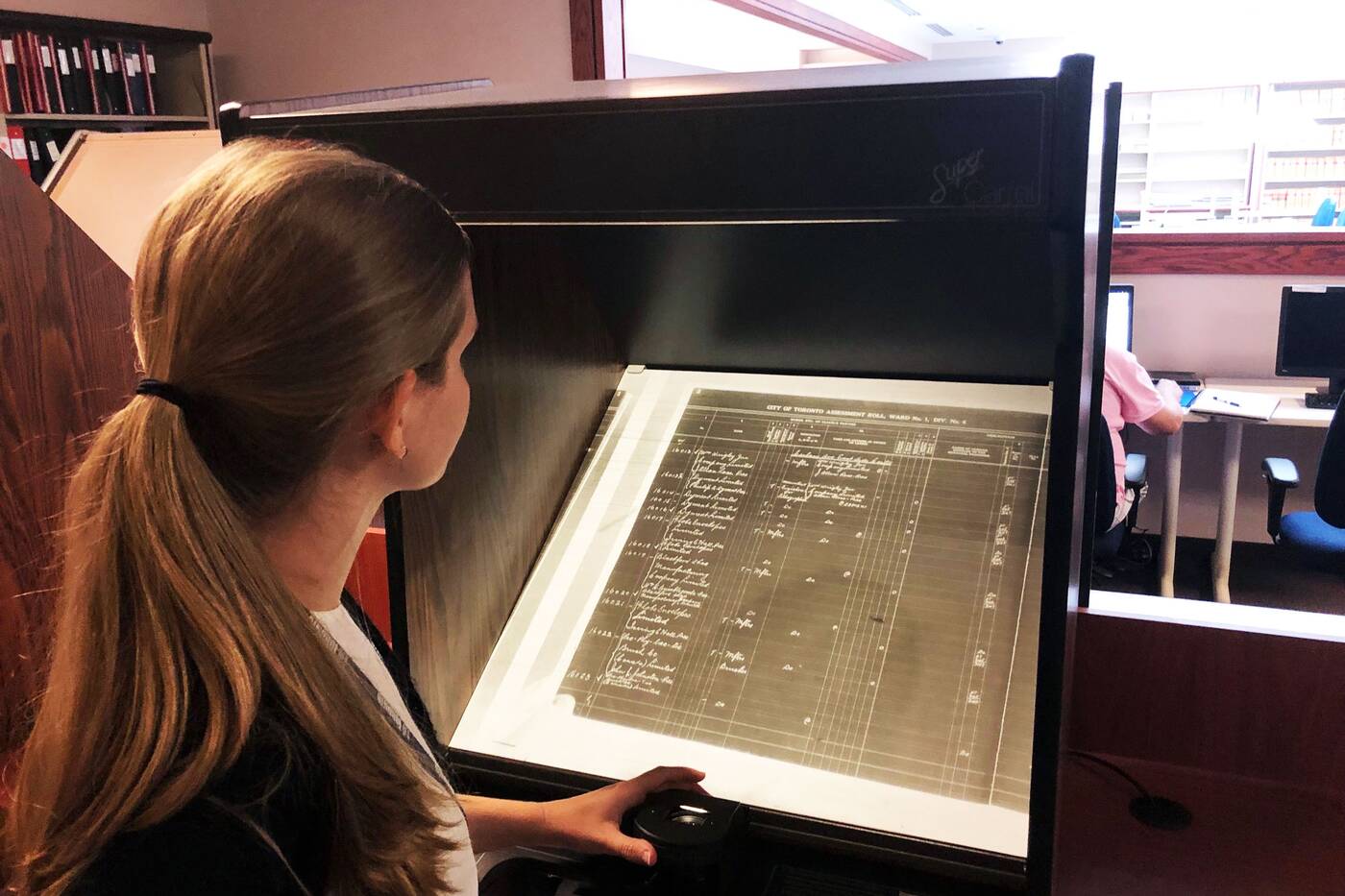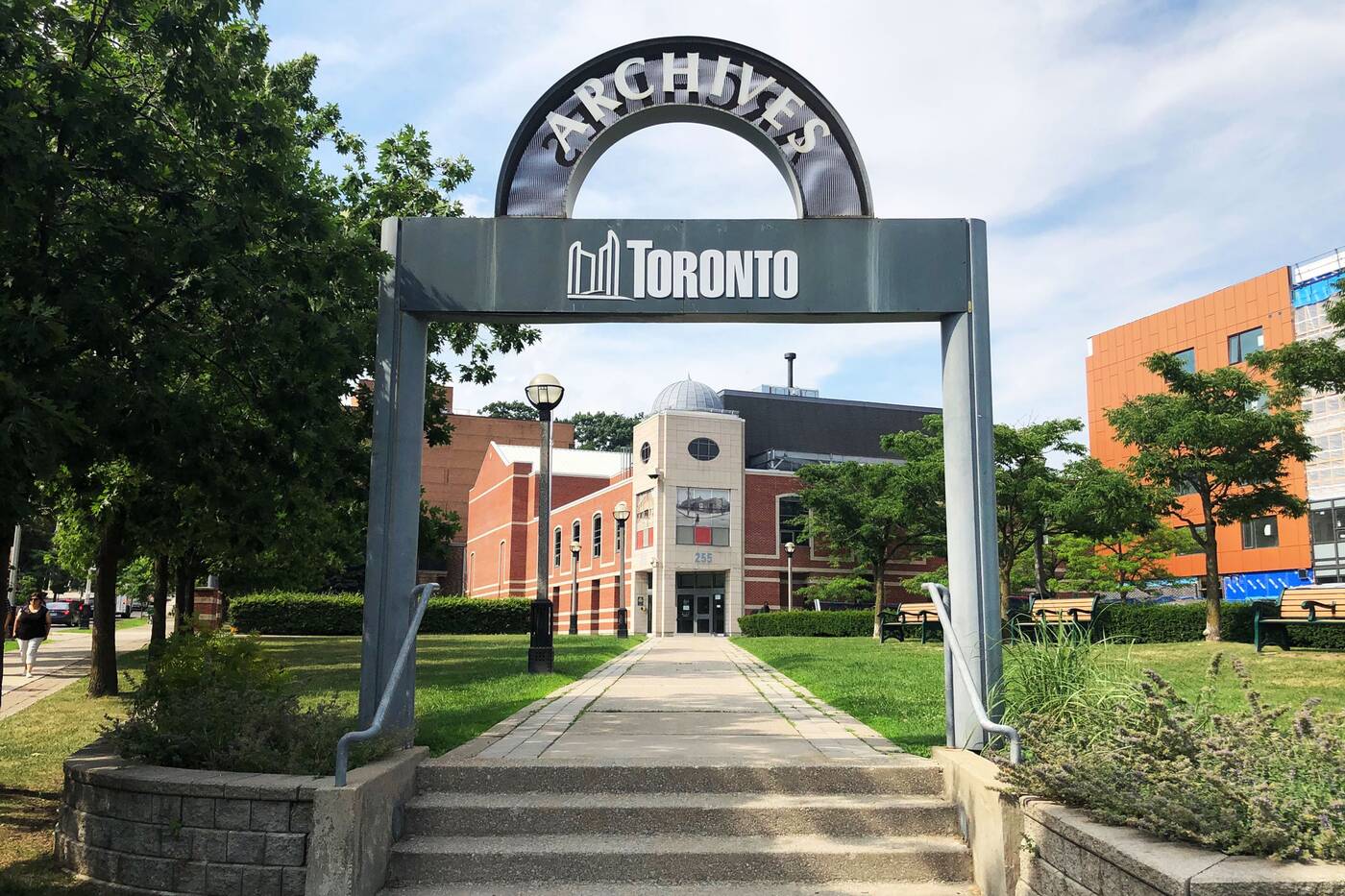
The Toronto Archives are a glimpse into the city's past
Black and white photos of Toronto's days of yore, old legal documents dating back to the 1790s, whirring machines that go clickity-clack: the City of Toronto's Archives is a research buff's paradise.
While some of us may know this Spadina Road record centre by name, it's likely you've never considered spending a day here, perusing the fascinating historic records about the city we live in.
But the majority of these photographs, maps, books, and documents are for public use, so why let them collect dust when you can actually learn something?

The City of Toronto Archives is a collection of municpal documents, photos, books, and maps.
The first key to approaching the Toronto Archives is knowing that you don't have to be a Masters of Archival Studies to enter.
Just steps from Casa Loma, and a quick walk from Dupont Station, this municipal treasure trove has sat on Spadina Road since 1992.The building itself was drawn up Zeidler Roberts, the same man who designed the Eaton Centre.
Climate-controlled, completely fire proof, and monitored by CCTV cameras every hour of the day, this somewhat plain-looking space is home to nearly 144,000 boxes of sacred records, worth well more than $32 million.

The building has sat near Casa Loma since 1992.
The first floor of the building is where you'll find the security desk and a rotating exhibition highlighting some aspect of Toronto, like the history of Toronto suburbs.
You'll want to head upstairs to the Research Room: a serene, bookish space with tons of natural light and a great studious feel. One entire wall is filled with City Council meeting minutes that range from 1997 (before things got digitized) all the way back to 1834.
Through the windows, you'll be able to get a glimpse into "the stacks"—the holding room for rows upon rows of 11-metre tall shelves filled with mystery boxes of information.

The archives hold hundreds of thousands of boxes in a fire-proof and climate-controlled area.
You'll probably see a specially-trained record centre worker moving around the aisles on a special cherry-picker machine, scanning barcodes and moving around boxes that have been requested for viewing—basically the coolest job ever.
First stop is the front desk, where Toronto Archives staff will be more than happy to help you with what you're looking for (and if it's nothing specific, the basic ins-and-outs of exploring the space).
All first-time visitors have to fill out an application form with basic information before being given a small slip of paper with an identification number. Hold on to that ID paper: it's basically your Archives library card, and it never expires.
You're allowed to bring your camera here, but you'll have to leave your bags in a coin-operated locker nearby (quarters provided).

Many people visit the Toronto Archives to research their properties, for tax and sale purposes.
The main reason why the general public usually hits up the Toronto Archives is to do research on their house, for property value purposes.
Old fire insurance plans help homeowners figure out when exactly their houses were built, even telling you whether it was initially built from wood or brick.
You can read that info on microfiches or microfilms, which can be viewed with some pretty high-tech Scanpro 2200 electric readers, or some more old-school readers. Either way, the machines are really fun to play with and require some very satisfying button-clicking and manual rewinding.

Old documents on microfiche can be viewed on rustic readers.
For anything non-property related, you'll be encouraged to use the online City of Toronto database (you can access it from home as well) to browse any kind of content using their handy keyword search and date range options.
The archives are home to more than 1.7 million photographs, but only 100,000 have been digitized, so you won't be able to view all of them online.
For those that haven't been digitized, you'll have to request a physical photo by creating a Records Request PDF and sending it to staff (it's easier than it sounds). They'll hand over the document and hopefully have it for you in an hour: just keep in mind that the cut-off time for requests is 3:30 p.m.

Tanya Mok
Latest Videos
Latest Videos
Join the conversation Load comments







